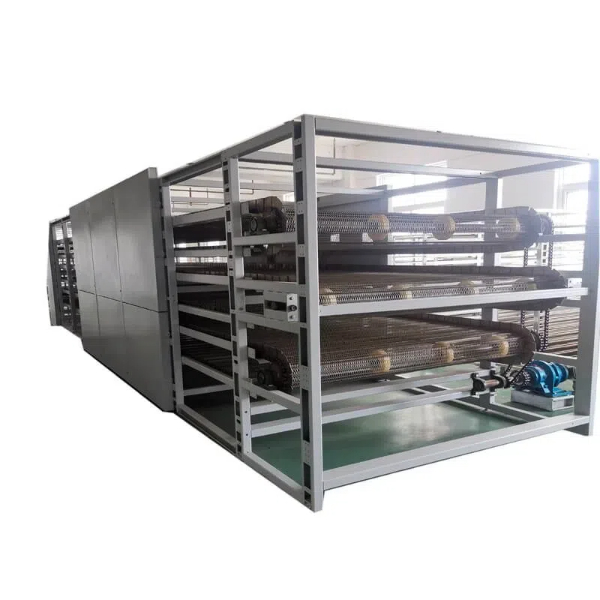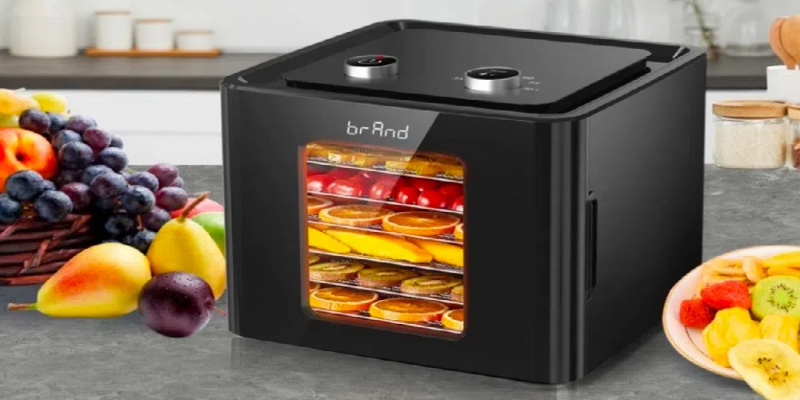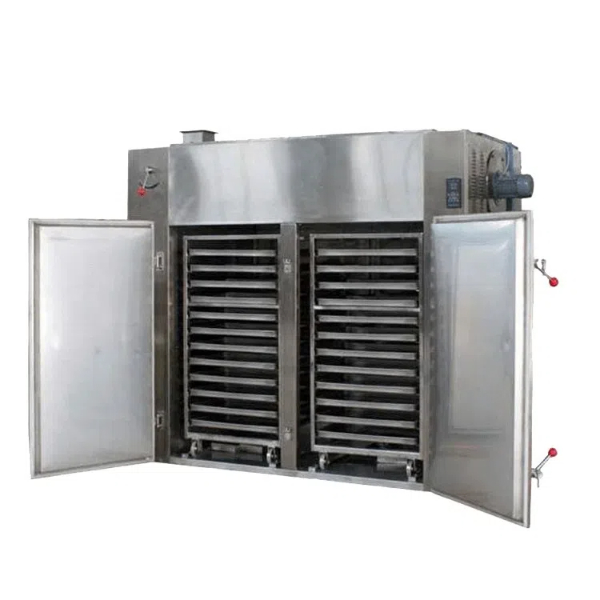
Content Menu
● Introduction to Food Dehydration Technology
● Understanding the Food Dehydrator Machine
● The Science Behind Drying Technology for Food Preservation
● Benefits of Food Dehydration
● Choosing the Right Home Food Dehydrator
● Exploring Fruit and Vegetable Dehydration
● The Art of Making Jerky with a Dehydrator
● Energy-Efficient Food Drying
● Healthy Snack Preparation Using a Dehydrator
● Long-Term Food Storage Solutions
● Commercial Food Dehydration Equipment
● The Future of Food Dehydration Technology
● Conclusion
● Frequently Asked Questions
>> 1. Q: What are the main benefits of using a food dehydrator machine?
>> 2. Q: Can all types of food be dehydrated?
>> 3. Q: How long does the dehydration process typically take?
>> 4. Q: Is it safe to dehydrate meat at home?
>> 5. Q: How should dehydrated foods be stored, and how long do they last?
Introduction to Food Dehydration Technology
In recent years, the food dehydrator machine has emerged as a game-changing appliance in kitchens worldwide. This innovative device has revolutionized the way we preserve food, offering a simple yet effective method to extend the shelf life of various food items while retaining their nutritional value. As more people become health-conscious and seek ways to reduce food waste, the popularity of food dehydrators has soared.
Understanding the Food Dehydrator Machine
A food dehydrator machine is a device designed to remove moisture from food items, effectively preserving them for extended periods. This process involves circulating warm air around the food, gradually evaporating its water content. The result is dried food that can be stored for months or even years without spoilage.
Modern food dehydrators come in various sizes and designs, ranging from compact countertop models for home use to large-scale commercial units. Most home dehydrators feature multiple trays that can be stacked, allowing users to dry different types of food simultaneously.
The Science Behind Drying Technology for Food Preservation
The principle behind food dehydration is relatively simple but highly effective. By removing moisture, dehydrators create an environment inhospitable to bacteria, mold, and other microorganisms that cause food spoilage. This process not only extends the shelf life of food but also concentrates its flavors and nutrients.The drying technology employed in food dehydrator machines typically involves:
1. Heat generation: A heating element warms the air inside the dehydrator.
2. Air circulation: A fan distributes the warm air evenly throughout the unit.
3. Moisture removal: Vents allow moist air to escape, maintaining a dry environment.
This controlled environment ensures that food is dried consistently and safely, preserving its nutritional content and flavor profile.

Benefits of Food Dehydration
The use of a food dehydrator machine offers numerous advantages:
1. Extended shelf life: Dehydrated foods can last for months or even years when stored properly.
2. Nutritional preservation: Unlike some other preservation methods, dehydration retains most of the food's original nutrients.
3. Space-saving storage: Dried foods take up significantly less space than their fresh counterparts.
4. Cost-effective: Buying seasonal produce in bulk and dehydrating it can lead to substantial savings.
5. Versatility: From fruits and vegetables to meats and herbs, a wide variety of foods can be dehydrated.
6. Healthy snack options: Dehydrated fruits and vegetables make for nutritious, preservative-free snacks.
Choosing the Right Home Food Dehydrator
When selecting a home food dehydrator, consider the following factors:
1. Capacity: Determine how much food you plan to dehydrate regularly.
2. Temperature control: Look for models with adjustable temperature settings for different food types.
3. Timer: A built-in timer can help prevent over-drying.
4. Noise level: Some dehydrators can be noisy, so consider this if you plan to run it overnight.
5. Ease of cleaning: Dishwasher-safe trays can make maintenance much simpler.
Exploring Fruit and Vegetable Dehydration
Fruits and vegetables are among the most popular items to dehydrate. The process not only preserves these nutritious foods but also creates delicious, concentrated flavors. Some popular options include:
1. Apple chips
2. Dried berries
3. Banana slices
4. Tomato leather
5. Dried herbs
6. Vegetable crisps
When dehydrating fruits and vegetables, it's essential to prepare them properly by washing, slicing evenly, and pre-treating if necessary (such as dipping apple slices in lemon juice to prevent browning).
The Art of Making Jerky with a Dehydrator
For meat lovers, a food dehydrator machine doubles as an excellent jerky maker. Homemade jerky is not only a protein-rich snack but also allows for customization of flavors and ingredients. When making jerky:
1. Choose lean cuts of meat
2. Slice the meat thinly and evenly
3. Marinate for flavor
4. Arrange on dehydrator trays without overlapping
5. Dry at the appropriate temperature (usually around 165°F or 74°C) for food safety
Energy-Efficient Food Drying
Modern food dehydrator machines are designed with energy efficiency in mind. Compared to other preservation methods like canning or freezing, dehydration typically consumes less energy. Some tips for maximizing energy efficiency include:
1. Filling the dehydrator to capacity
2. Avoiding opening the door frequently during the drying process
3. Using a solar dehydrator for outdoor use in sunny climates

Healthy Snack Preparation Using a Dehydrator
One of the most appealing aspects of owning a food dehydrator is the ability to create healthy, preservative-free snacks at home. Some popular options include:
1. Kale chips
2. Dried fruit leathers
3. Dehydrated yogurt drops
4. Vegetable crisps
5. Homemade granola
These snacks are not only nutritious but also cost-effective compared to store-bought alternatives.
Long-Term Food Storage Solutions
For those interested in long-term food storage, whether for emergency preparedness or to reduce food waste, a food dehydrator is an invaluable tool. Properly dehydrated and stored foods can last for years, providing a sustainable solution for food preservation.
Key tips for long-term storage of dehydrated foods include:
1. Ensuring foods are completely dry before storage
2. Using airtight containers or vacuum-sealed bags
3. Storing in a cool, dark place
4. Regularly rotating stored items
Commercial Food Dehydration Equipment
While home dehydrators are perfect for personal use, commercial-grade food dehydration equipment is designed for larger-scale operations. These machines are used in various industries, including:
1. Food manufacturing
2. Agriculture
3. Pharmaceutical production
4. Pet food manufacturing
Commercial dehydrators often feature advanced technology for precise temperature and humidity control, ensuring consistent results across large batches of food.
The Future of Food Dehydration Technology
As technology continues to advance, we can expect to see further innovations in food dehydrator machines. Some potential developments include:
1. Smart dehydrators with mobile app integration
2. More energy-efficient models
3. Improved sensors for optimal drying
4. Integration with other kitchen appliances
These advancements will likely make food dehydration even more accessible and efficient for both home users and commercial operations.
Conclusion
The food dehydrator machine has undoubtedly earned its place as an essential appliance in modern kitchens. By offering an efficient, cost-effective, and nutritious method of food preservation, it addresses many of the challenges faced by health-conscious consumers and those looking to reduce food waste. Whether you're a home cook looking to explore new culinary techniques or a business owner seeking efficient food preservation methods, a food dehydrator can be a valuable investment.
As we continue to seek sustainable and healthy food options, the role of food dehydration technology is likely to grow, offering innovative solutions for food preservation and snack preparation. By embracing this technology, we can enjoy nutritious, flavorful foods year-round while reducing our environmental impact and promoting a more sustainable approach to food consumption.

Frequently Asked Questions
1. Q: What are the main benefits of using a food dehydrator machine?
A: The main benefits include extended food shelf life, nutritional preservation, space-saving storage, cost-effectiveness, versatility in food preparation, and the ability to create healthy, preservative-free snacks.
2. Q: Can all types of food be dehydrated?
A: While many foods can be dehydrated, some are better suited to the process than others. Fruits, vegetables, meats, herbs, and some dairy products (like yogurt) are commonly dehydrated. However, foods with high fat content may not dehydrate well and could become rancid.
3. Q: How long does the dehydration process typically take?
A: The dehydration time varies depending on the food type, its water content, and the dehydrator's settings. It can range from a few hours for herbs to 12-24 hours for fruits and meats. Always follow recipe guidelines or your dehydrator's manual for best results.
4. Q: Is it safe to dehydrate meat at home?
A: Yes, it's safe to dehydrate meat at home if proper food safety guidelines are followed. This includes using fresh, lean meat, marinating with salt (which acts as a preservative), and drying at the correct temperature (usually around 165°F or 74°C) to eliminate harmful bacteria.
5. Q: How should dehydrated foods be stored, and how long do they last?
A: Dehydrated foods should be stored in airtight containers or vacuum-sealed bags in a cool, dark place. When stored properly, many dehydrated foods can last from 6 months to several years, depending on the food type and storage conditions. Always check for signs of spoilage before consuming.












